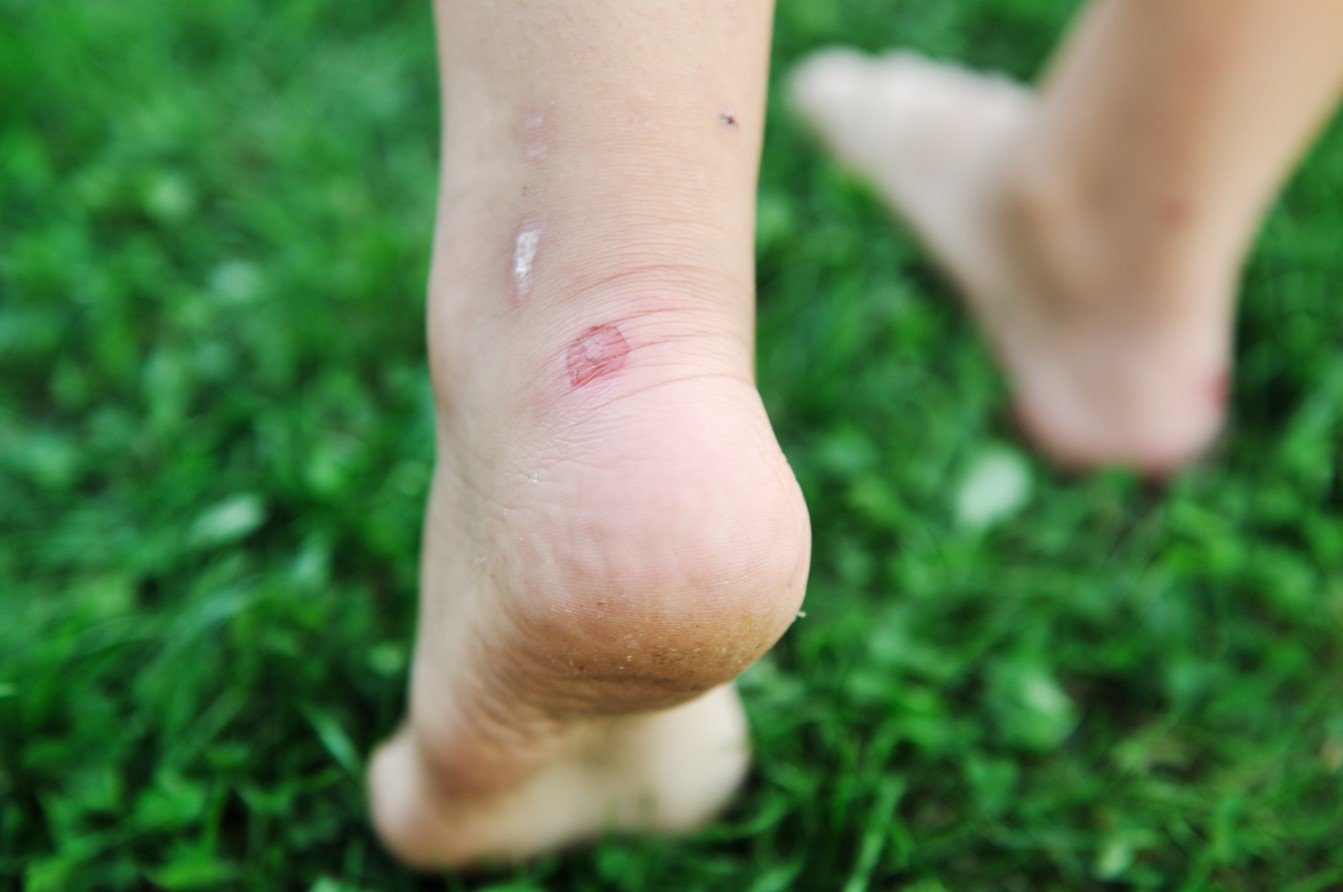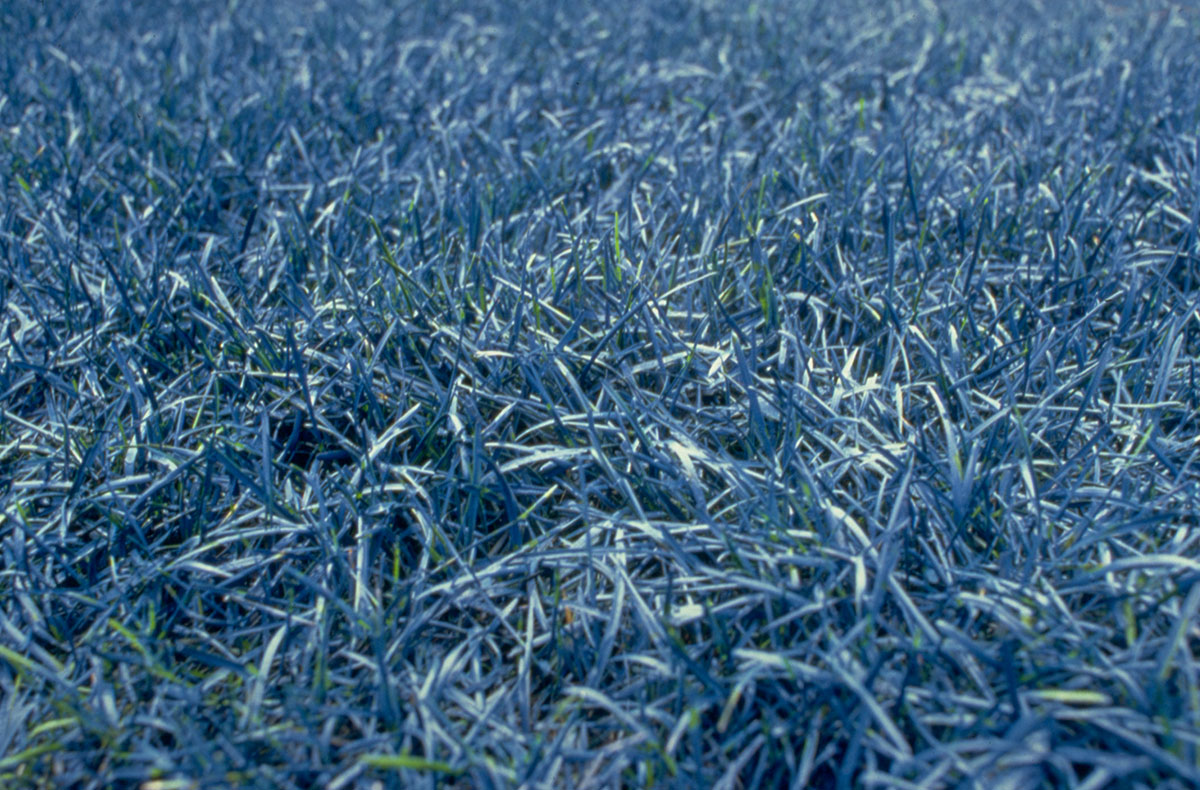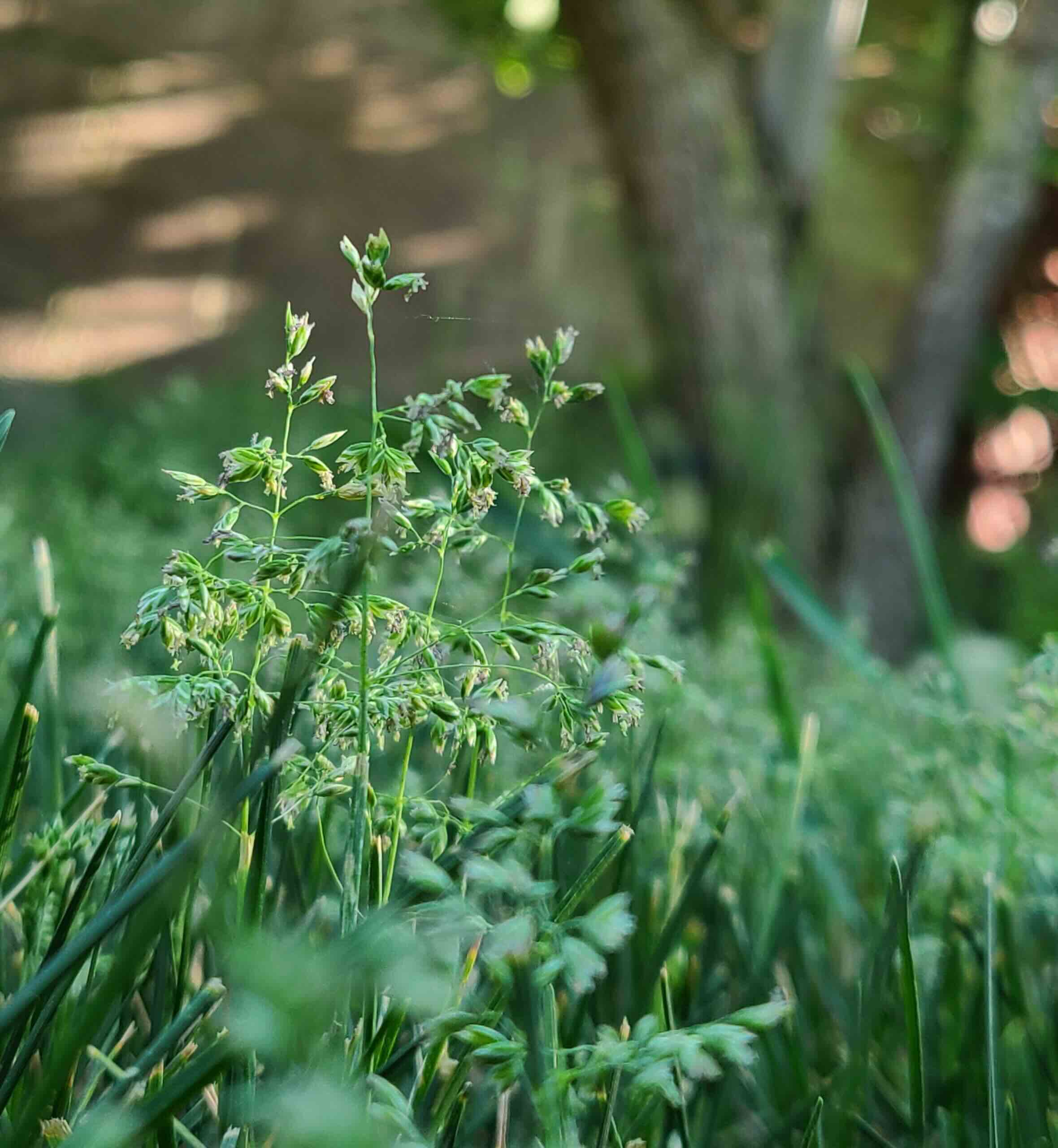Home>Gardening & Outdoor>Landscaping Ideas>Why Grass Makes You Itch


Landscaping Ideas
Why Grass Makes You Itch
Modified: August 17, 2024
Discover how landscaping ideas can help reduce itching caused by grass and create a more enjoyable outdoor space. Explore effective solutions for a comfortable and allergy-free lawn.
(Many of the links in this article redirect to a specific reviewed product. Your purchase of these products through affiliate links helps to generate commission for Storables.com, at no extra cost. Learn more)
Introduction
There’s nothing quite like the feeling of soft, lush grass beneath your feet on a warm summer day. However, for some individuals, this idyllic scene quickly turns into a nightmare of itching, sneezing, and watery eyes. Have you ever wondered why grass makes you itch? In this article, we’ll delve into the science behind grass allergies, explore the different types of grass allergies, examine the symptoms, discuss treatment options, and provide practical tips for prevention.
For many people, spending time outdoors surrounded by nature is a cherished pastime. Whether it’s playing sports, having a picnic, or simply enjoying the fresh air, the presence of grass is ubiquitous in these activities. However, for those who suffer from grass allergies, these simple pleasures can be marred by uncomfortable and sometimes debilitating symptoms.
Understanding the underlying causes of grass allergies and learning how to manage and prevent them is essential for anyone who wants to fully enjoy the great outdoors. So, let’s embark on a journey to unravel the mystery of why grass makes you itch and discover how to reclaim the joy of being in nature without the discomfort of allergies.
Key Takeaways:
- Grass allergies are caused by the body’s overreaction to proteins in grass pollen, leading to uncomfortable symptoms like sneezing, itching, and congestion. Understanding the triggers and symptoms is crucial for effective management.
- Preventing grass allergies involves proactive measures like monitoring pollen counts, timing outdoor activities, and allergen-proofing the home. By integrating these strategies, individuals can reduce their exposure to grass pollen and enjoy outdoor activities with greater comfort.
Read more: How To Get Rid Of Grass Itch
The Science Behind Grass Allergies
Grass allergies, also known as hay fever or allergic rhinitis, are triggered by the body’s immune system overreacting to certain proteins found in grass pollen. When an individual with a grass allergy comes into contact with these proteins, the immune system mistakenly identifies them as harmful invaders and releases chemicals, such as histamine, to defend the body. This immune response leads to the classic symptoms of sneezing, itching, congestion, and watery eyes.
Grass pollen is lightweight and easily carried by the wind, making it highly prevalent in the air during the spring and summer months. When inhaled, the pollen can trigger an allergic reaction in susceptible individuals. It’s important to note that grass allergies can also be exacerbated by direct contact with grass, as the pollen can settle on the grass blades and be transferred upon touch.
There are hundreds of grass species, but only a few are significant allergens. Common culprits include Bermuda grass, Timothy grass, Johnson grass, and Kentucky bluegrass. Each type of grass produces its own unique pollen, and individuals may be sensitive to one or more varieties.
Furthermore, it’s not just the pollen that can cause allergies. Grass can also harbor mold spores, another common allergen. When grass is moist or damp, such as after rainfall or in humid conditions, it creates an ideal environment for mold growth, which can exacerbate allergic reactions in susceptible individuals.
Understanding the science behind grass allergies is crucial for developing effective management and prevention strategies. By recognizing the specific triggers and how they interact with the body’s immune system, individuals can take proactive steps to minimize their exposure and alleviate the associated symptoms.
Types of Grass Allergies
Grass allergies can manifest in various forms, each with its own set of characteristics and triggers. The two primary types of grass allergies are seasonal allergic rhinitis (hay fever) and allergic asthma.
Seasonal Allergic Rhinitis (Hay Fever)
Seasonal allergic rhinitis, more commonly known as hay fever, is the most prevalent type of grass allergy. It typically occurs during specific times of the year when grasses are in bloom and release pollen into the air. Symptoms of hay fever include sneezing, nasal congestion, runny nose, itchy or watery eyes, and itching of the throat or roof of the mouth. These symptoms can significantly impact daily activities and diminish the overall quality of life for those affected.
Allergic Asthma
Allergic asthma is a type of asthma triggered by exposure to allergens such as grass pollen. When individuals with allergic asthma inhale grass pollen, it can lead to inflammation and constriction of the airways, causing symptoms such as coughing, wheezing, chest tightness, and difficulty breathing. For individuals with allergic asthma, exposure to grass pollen can exacerbate existing respiratory issues and increase the risk of asthma attacks.
It’s important to note that some individuals may experience a combination of hay fever and allergic asthma, further complicating the management of their grass allergies. Understanding the specific type of grass allergy an individual has is crucial for developing an effective treatment plan and implementing appropriate preventive measures.
Additionally, the severity of grass allergies can vary widely among individuals, ranging from mild discomfort to significant impairment of daily functioning. By identifying the type and severity of the allergy, healthcare providers can tailor interventions to address the unique needs of each patient.
Read more: Why Does My Hot Tub Make My Skin Itch
Symptoms of Grass Allergies
Grass allergies can trigger a range of symptoms that affect the respiratory system, skin, and overall well-being of individuals who are sensitive to grass pollen or other allergens associated with grass. These symptoms can vary in intensity and may present differently depending on the type of grass allergy and the individual’s sensitivity. Common symptoms of grass allergies include:
Respiratory Symptoms
- Sneezing: Frequent and uncontrollable bouts of sneezing, often in rapid succession, as the body attempts to expel the allergens.
- Nasal Congestion: Blockage or stuffiness in the nasal passages, leading to difficulty breathing through the nose.
- Runny Nose: Excessive production of clear, watery mucus from the nasal passages.
- Itchy or Watery Eyes: Irritation and redness of the eyes, accompanied by itching and excessive tearing.
- Itchy Throat or Palate: Uncomfortable itching or irritation in the throat or roof of the mouth.
- Coughing: Persistent coughing, which may be exacerbated by postnasal drip or throat irritation.
- Wheezing: Whistling or rattling sounds during breathing, particularly in individuals with allergic asthma.
- Shortness of Breath: Difficulty breathing or feeling breathless, especially in individuals with allergic asthma.
Skin Symptoms
- Skin Rash: Red, inflamed, or itchy patches of skin, often appearing after direct contact with grass or grass pollen.
- Hives: Raised, itchy welts on the skin, typically as a result of an allergic reaction.
General Well-being
- Fatigue: Feeling tired or lethargic, often as a result of disrupted sleep due to nighttime symptoms.
- Irritability: Heightened irritability or mood changes due to the discomfort and impact on daily activities.
- Reduced Physical Activity: Avoidance of outdoor activities or exercise due to the exacerbation of symptoms.
It’s important to recognize that the severity and combination of symptoms can vary from person to person. Some individuals may experience mild symptoms that are easily managed, while others may face significant challenges in coping with the effects of grass allergies on their daily lives. Identifying and understanding the symptoms is the first step toward effectively managing and mitigating the impact of grass allergies.
Read more: Why Should You Get Synthetic Grass
Treatment for Grass Allergies
Managing grass allergies involves a combination of preventive measures, symptom relief, and, in some cases, medical intervention. The goal of treatment is to minimize exposure to grass pollen and alleviate the bothersome symptoms that arise from allergic reactions. Here are several approaches commonly used to address grass allergies:
1. Allergen Avoidance
The most effective strategy for managing grass allergies is to minimize exposure to grass pollen. This can be achieved by staying indoors during peak pollen times, using air conditioning with HEPA filters to reduce indoor pollen levels, and keeping windows closed. When spending time outdoors, wearing sunglasses and a hat can help prevent pollen from coming into contact with the eyes and hair.
2. Medications
Over-the-counter and prescription medications can provide relief from grass allergy symptoms. Antihistamines are commonly used to alleviate sneezing, itching, and runny nose, while decongestants can help reduce nasal congestion. Nasal corticosteroid sprays are effective in managing nasal inflammation and congestion. For individuals with allergic asthma, bronchodilators and inhaled corticosteroids may be prescribed to manage respiratory symptoms.
3. Immunotherapy
Immunotherapy, commonly known as allergy shots, is a long-term treatment option that involves regular injections of allergen extracts to desensitize the immune system. This approach can modify the body’s response to allergens and reduce the severity of allergic reactions over time. Sublingual immunotherapy, which involves placing allergen extracts under the tongue, is another form of immunotherapy that may be recommended in certain cases.
Read more: How To Stop Insulation Itch
4. Emergency Medications
For individuals with severe grass allergies or allergic asthma, carrying emergency medications such as epinephrine auto-injectors is essential. These medications can be life-saving in the event of a severe allergic reaction or an asthma attack triggered by grass pollen exposure.
5. Consultation with a Healthcare Provider
Seeking guidance from a healthcare provider, such as an allergist or immunologist, is crucial for developing a personalized treatment plan tailored to the individual’s specific allergy profile and medical history. Healthcare providers can conduct allergy testing, provide education on allergen avoidance, and recommend appropriate medications or immunotherapy based on the severity of the grass allergies.
By employing a comprehensive approach that combines allergen avoidance, medication management, and, when appropriate, immunotherapy, individuals can effectively mitigate the impact of grass allergies and regain control over their daily lives.
Prevention of Grass Allergies
Preventing grass allergies involves proactive measures to minimize exposure to grass pollen and other allergens associated with grass. By implementing preventive strategies, individuals can reduce the likelihood and severity of allergic reactions. Here are several effective approaches for preventing grass allergies:
1. Monitor Pollen Counts
Stay informed about local pollen counts, especially during the spring and summer months when grasses are in bloom. Many weather websites and apps provide pollen forecasts, allowing individuals to plan outdoor activities when pollen levels are lower.
Read more: Why Does Rainwater Make Grass Grow Faster
2. Timing Outdoor Activities
Plan outdoor activities, such as exercising or gardening, during times when pollen levels are lower, typically in the late afternoon or after rainfall. Avoid outdoor activities during early morning hours when pollen levels are typically higher.
3. Protective Clothing
Wear a wide-brimmed hat and sunglasses to prevent grass pollen from coming into contact with the face, hair, and eyes. When mowing the lawn or engaging in outdoor chores, wearing a mask can help reduce inhalation of pollen and other allergens.
4. Allergen-Proofing the Home
Keep windows closed during peak pollen seasons and use air conditioning with HEPA filters to reduce indoor pollen levels. Regularly vacuum carpets and upholstery, and consider using allergen-proof covers for pillows and mattresses to minimize exposure to pollen indoors.
5. Lawn Maintenance
Minimize exposure to grass pollen by keeping the lawn well-maintained. Consider using a professional lawn service to mow the lawn and manage grass and weed growth. After outdoor activities, shower and change clothes to remove pollen from the body and prevent it from being spread indoors.
Read more: Landscaping: How Much Do You Make
6. Allergy-Friendly Landscaping
When landscaping the yard, consider using low-pollen plants and ground covers that are less likely to trigger allergic reactions. Consult with a landscaping professional to create an allergy-friendly outdoor environment that minimizes exposure to grass pollen and other allergens.
7. Allergy Testing and Immunotherapy
Undergo allergy testing to identify specific grass allergens and consider immunotherapy (allergy shots or sublingual immunotherapy) to desensitize the immune system and reduce the severity of allergic reactions over time.
By integrating these preventive measures into daily routines and outdoor activities, individuals can significantly reduce their exposure to grass pollen and effectively manage their grass allergies, allowing for a more enjoyable and comfortable experience in outdoor settings.
Conclusion
Grass allergies can pose significant challenges for individuals who long to enjoy the beauty of the outdoors without the discomfort of allergic reactions. By understanding the science behind grass allergies, recognizing the various types and symptoms, and implementing effective treatment and prevention strategies, individuals can reclaim the joy of outdoor activities and minimize the impact of grass allergies on their daily lives.
From seasonal allergic rhinitis (hay fever) to allergic asthma, grass allergies can manifest in diverse ways, affecting the respiratory system, skin, and overall well-being. The prevalence of grass pollen during the spring and summer months necessitates proactive measures to minimize exposure and alleviate symptoms. Allergen avoidance, medication management, and, in some cases, immunotherapy are key components of a comprehensive approach to managing grass allergies.
Preventive strategies, such as monitoring pollen counts, timing outdoor activities, and allergen-proofing the home, play a crucial role in reducing the likelihood and severity of allergic reactions. By incorporating these preventive measures into daily routines and outdoor endeavors, individuals can create an environment that minimizes exposure to grass pollen and other allergens associated with grass.
Ultimately, the journey to overcoming grass allergies involves a combination of knowledge, proactive measures, and personalized treatment plans. Seeking guidance from healthcare providers, such as allergists or immunologists, can provide individuals with the resources and support needed to effectively manage and mitigate the impact of grass allergies.
With a deeper understanding of the triggers and symptoms of grass allergies, along with the tools and strategies for prevention and treatment, individuals can embark on a path toward enjoying the great outdoors with greater comfort and confidence, free from the discomfort of allergic reactions to grass.
Frequently Asked Questions about Why Grass Makes You Itch
Was this page helpful?
At Storables.com, we guarantee accurate and reliable information. Our content, validated by Expert Board Contributors, is crafted following stringent Editorial Policies. We're committed to providing you with well-researched, expert-backed insights for all your informational needs.











0 thoughts on “Why Grass Makes You Itch”